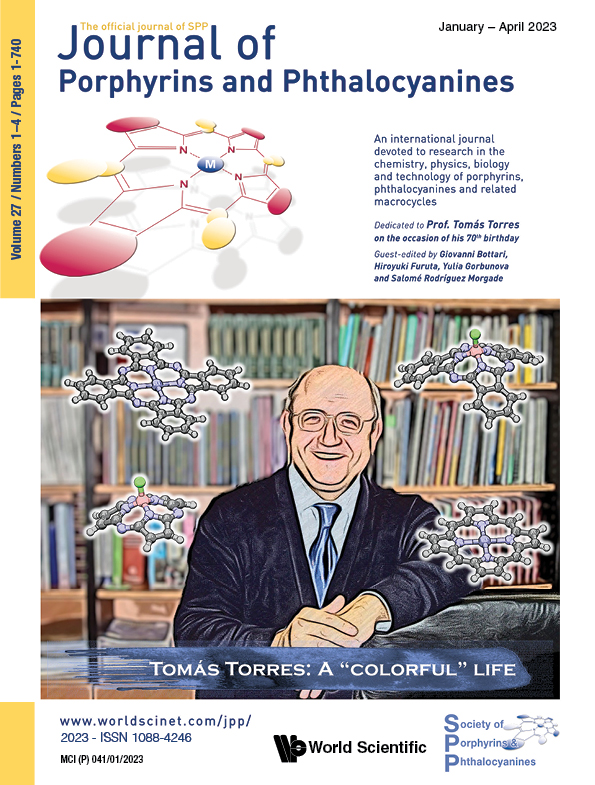Absorption spectra of calix[3]pyrrole analogs as probes for contracted macrocycles
Abstract
Calix[3]pyrrole and its furan derivatives exhibited bathochromically shifted lowest-energy electronic transition bands in their absorption spectra compared with their calix[4]- and calix[6]-pyrrole analogues, despite the repeating units being the same. We also observed fluorescence emission for calix[3]-type macrocycles. The Stokes shift of the furan/pyrrole hybrid macrocycles, calix[2]furan[1]-pyrrole, and calix[1]furan[2]pyrrole, substantially varied depending on the solvent polarity. Non-covalent interaction (NCI) analyses indicated enhanced interactions between neighboring aromatic rings in the calix[3]pyrrole macrocycle, whereas such interactions were weak in calix[4]pyrrole, in which the interchromophore distance is remarkably longer than in calix[3]pyrrole. Theoretical analyses indicated that the red-shifted, lowest-energy bands of calix[3]pyrrole correspond to HOMO–LUMO transitions, the energy gap of which was narrow compared with calix[4]pyrroles. The characteristic absorption bands for calix[3]pyrrole and its related macrocycles are useful as probes for distinguishing such macrocycles from higher calix[n]pyrrole (n≥ 4) analogues that exhibit almost identical absorption spectra.

Dedicated to Prof. Tomás Torres on the occasion of his 70th birthday
Handbook of Porphyrin Science now available in 46 volumes


